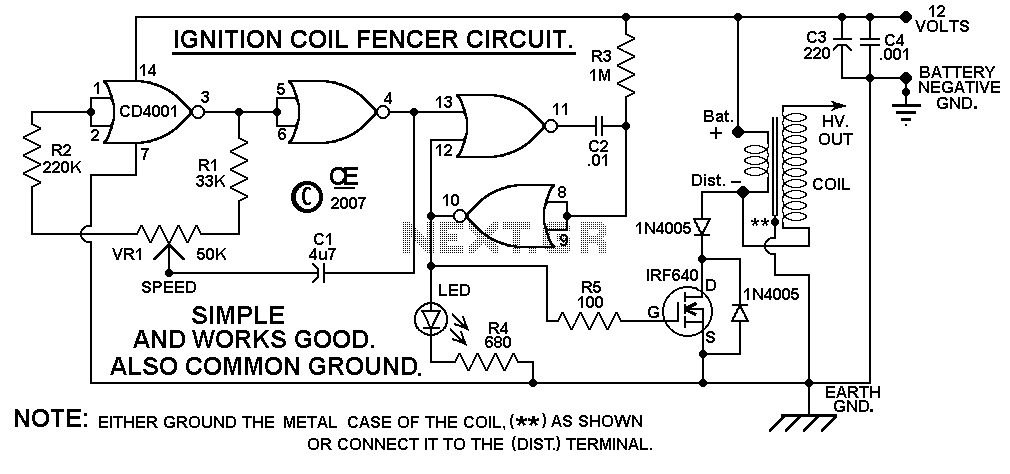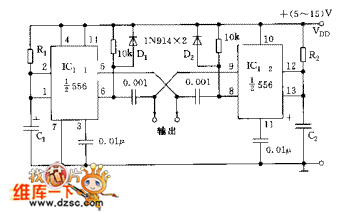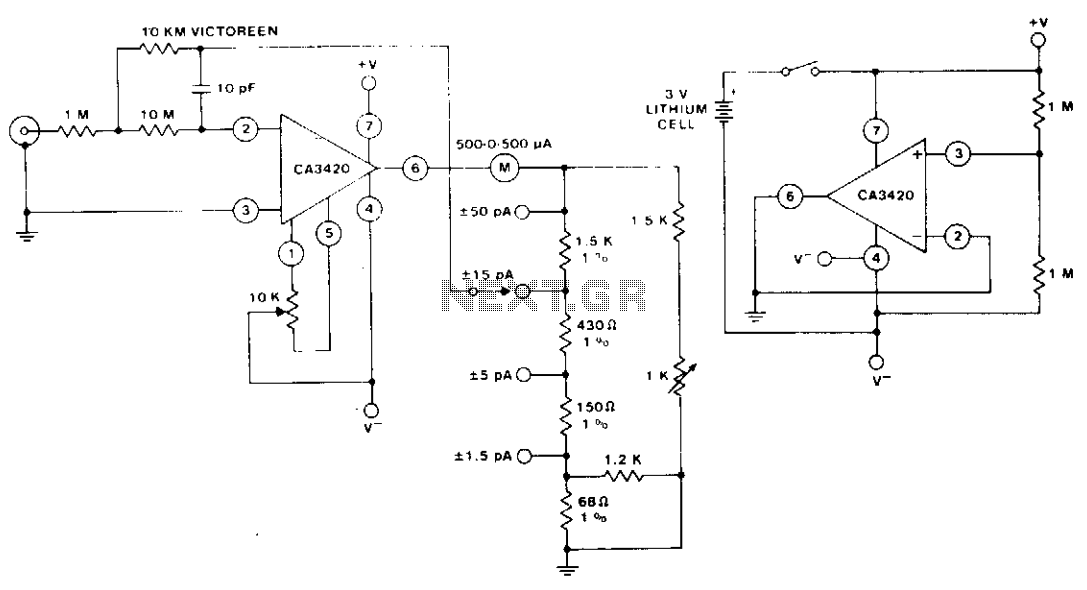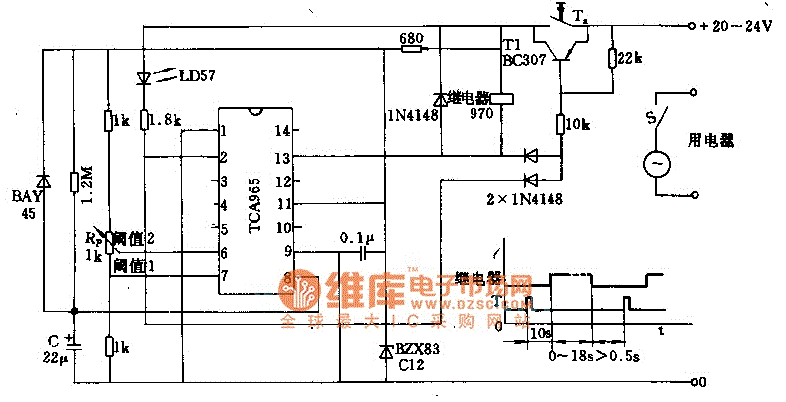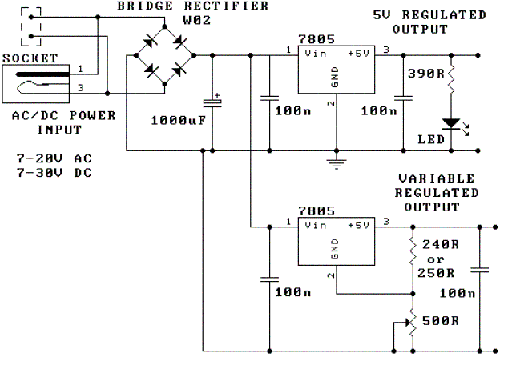
Vlf Whistler Receiver Circuit
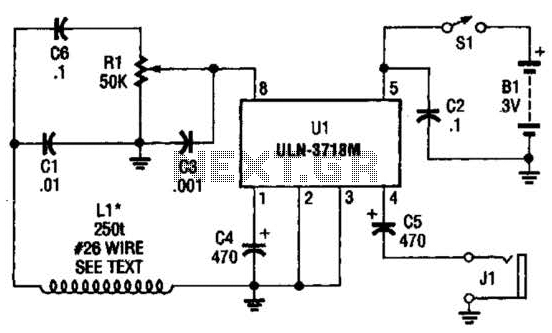
The VLF whistler receiver is designed to detect natural radio noise and signals that occur below 20 kHz. LI is a large loop antenna consisting of 250 to 300 turns of #26 gauge wire wound on a form with a diameter of 3 feet. Additionally, LI should be installed at a considerable distance from power lines and oriented to minimize interference from 60 Hz and 120 Hz signals.
The VLF (Very Low Frequency) whistler receiver operates within the frequency range below 20 kHz, primarily capturing natural electromagnetic emissions from lightning strikes and other atmospheric phenomena. The primary component of this receiver is the large loop antenna, designated as LI. This antenna is constructed using 250 to 300 turns of #26 gauge wire, which provides a balance between sensitivity and bandwidth. The choice of wire gauge is crucial as it affects the antenna's resistance and overall efficiency.
The antenna is mounted on a form with a diameter of 3 feet, which is optimal for capturing low-frequency signals. The loop design enhances the magnetic field interaction with incoming radio waves, thus improving the receiver's ability to detect faint signals. It is essential that the antenna is installed away from power lines to reduce electromagnetic interference, which can significantly degrade the quality of the received signals.
Proper orientation of the antenna is also vital. By aligning the loop to minimize pickup from 60 Hz and 120 Hz power line frequencies, the receiver can focus on capturing the desired VLF signals. This orientation is typically achieved by adjusting the loop's position relative to known sources of electrical noise, ensuring that the primary signals of interest are not masked by unwanted interference.
In summary, the VLF whistler receiver, with its carefully designed loop antenna, is an effective tool for exploring natural radio phenomena, provided that installation considerations regarding distance from power lines and antenna orientation are meticulously followed. The VLF whistler receiver is intended to listen to natural radio noise and signals that occur below 20 kHz. LI is a large loop antenna that is 250 to 300 turns #26 gauge wire on a form 3` diameter. LI should be mounted well away from power lines and is oriented for minimum 60- and 120-Hz pickup. 🔗 External reference
The VLF (Very Low Frequency) whistler receiver operates within the frequency range below 20 kHz, primarily capturing natural electromagnetic emissions from lightning strikes and other atmospheric phenomena. The primary component of this receiver is the large loop antenna, designated as LI. This antenna is constructed using 250 to 300 turns of #26 gauge wire, which provides a balance between sensitivity and bandwidth. The choice of wire gauge is crucial as it affects the antenna's resistance and overall efficiency.
The antenna is mounted on a form with a diameter of 3 feet, which is optimal for capturing low-frequency signals. The loop design enhances the magnetic field interaction with incoming radio waves, thus improving the receiver's ability to detect faint signals. It is essential that the antenna is installed away from power lines to reduce electromagnetic interference, which can significantly degrade the quality of the received signals.
Proper orientation of the antenna is also vital. By aligning the loop to minimize pickup from 60 Hz and 120 Hz power line frequencies, the receiver can focus on capturing the desired VLF signals. This orientation is typically achieved by adjusting the loop's position relative to known sources of electrical noise, ensuring that the primary signals of interest are not masked by unwanted interference.
In summary, the VLF whistler receiver, with its carefully designed loop antenna, is an effective tool for exploring natural radio phenomena, provided that installation considerations regarding distance from power lines and antenna orientation are meticulously followed. The VLF whistler receiver is intended to listen to natural radio noise and signals that occur below 20 kHz. LI is a large loop antenna that is 250 to 300 turns #26 gauge wire on a form 3` diameter. LI should be mounted well away from power lines and is oriented for minimum 60- and 120-Hz pickup. 🔗 External reference
Warning: include(partials/cookie-banner.php): Failed to open stream: Permission denied in /var/www/html/nextgr/view-circuit.php on line 713
Warning: include(): Failed opening 'partials/cookie-banner.php' for inclusion (include_path='.:/usr/share/php') in /var/www/html/nextgr/view-circuit.php on line 713
